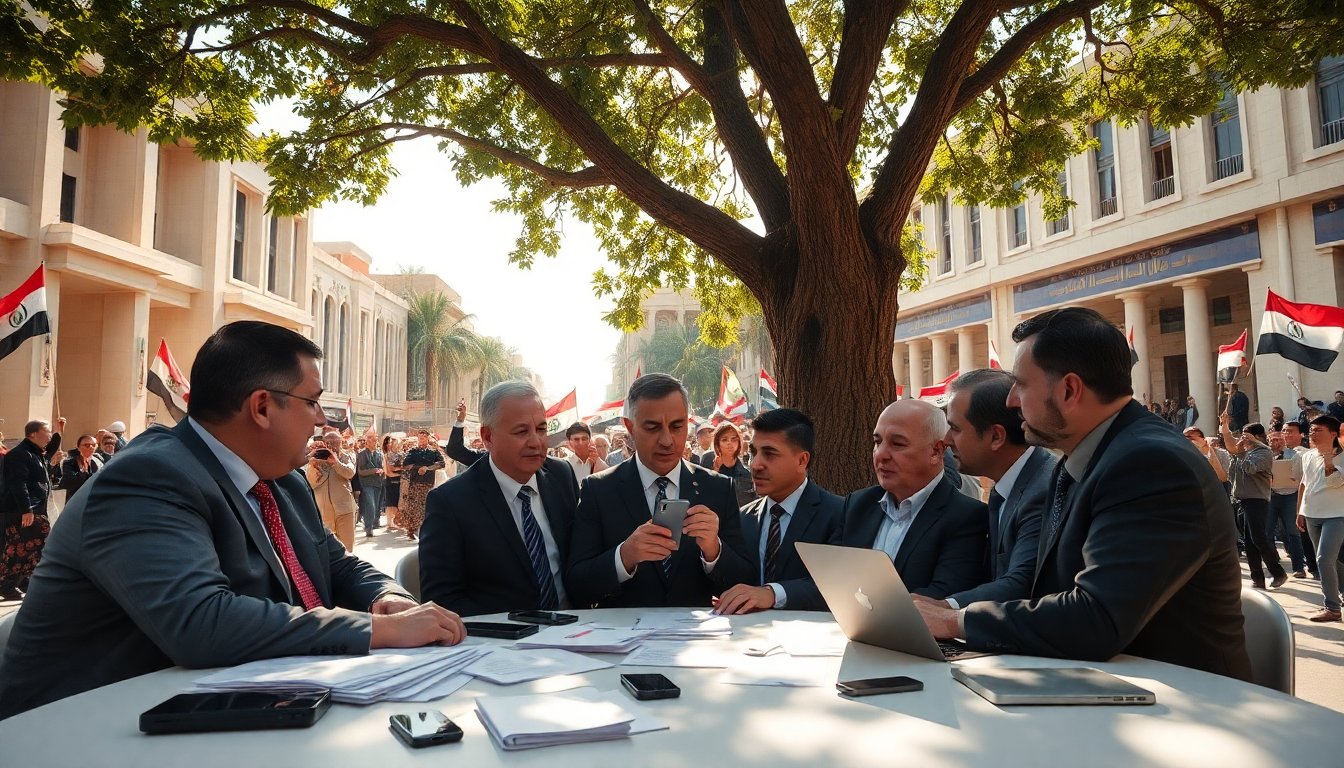Table of Contents
The recent elections in Iraq have led to a landscape of uncertainty, as no single party has secured enough seats to independently form a government. This scenario sets the stage for extended negotiations among various political factions, particularly those aligned with Iran, as they seek to assert their influence in the emerging political environment.
Iranian-backed parties are currently positioned to bolster their influence following these electoral results. However, their success will depend on their ability to maintain unity amid upcoming challenges. The absence of significant rival groups, particularly the popular Shia cleric Muqtada al Sadr, who called for a boycott of the elections, presents both opportunities and obstacles for these factions.
Challenges and opportunities for Iranian-backed parties
A key advantage for Iranian-backed factions is Sadr’s withdrawal from the political arena. Previously, he dominated the last elections, effectively sidelining these groups. His decision to abstain from participation has removed a significant barrier, allowing Iranian-aligned parties to shift their focus toward appealing to Sadr’s supporters in an attempt to secure their votes.
The impact of electoral law changes
The structure of the elections has also favored these factions. A significant change to the electoral law reinstated a proportional representation system, which allows for the transfer of excess votes within party lists. This reform addresses the fragmentation that plagued Iranian-backed parties during previous elections under a different voting system. By reducing vote splitting among candidates from the same party, the new law enhances their chances of securing more seats.
Each additional seat gained increases these factions’ bargaining power in government formation. In Iraq, the selection of the prime minister is determined not solely by popular votes, but through negotiations among political elites. Parties with a larger parliamentary presence wield substantial influence in these discussions, which often center around the allocation of key ministries and positions.
The risk of internal divisions
Despite their advantages, Iranian-backed parties face a significant risk of internal fragmentation that could undermine their collective influence. Historical rivalries and conflicting agendas may lead to competition rather than cooperation in the post-election environment. Issues such as the future of the Iranian-backed Popular Mobilization Forces (PMF) and strategies regarding regional conflicts like the situation in Syria are contentious topics that could exacerbate divisions.
Iran’s role in seeking unity
Recognizing the potential for disunity, Iran has taken proactive measures to encourage cohesion among its allied parties. Iranian officials have visited Baghdad to foster collaboration and mitigate the risk of splintering. They understand that a lack of unity could jeopardize both electoral success and the formation of a stable government, ultimately threatening Iran’s broader strategic interests in Iraq.
The political landscape is further complicated by the ambitions of current Prime Minister Mohammad Shia al Sudani, who is seeking re-election. His recent actions, including the dismissal of two militia commanders associated with Iranian factions, have raised concerns among these groups about their ability to control his administration. In response, they have begun publicly questioning his integrity, alleging corruption and ties to the Baathist regime, in an effort to undermine his credibility.
Potential for new alliances
As political maneuvering unfolds, speculation grows regarding Sudani’s potential shift in alliances. Reports suggest he may seek to align with non-Iranian-backed parties, potentially forming a coalition with Kurdish and Sunni factions to exclude Iranian influence from the government formation process. This mirrors previous alliances formed by Sadr and others aimed at limiting the power of Iranian-backed entities.
The upcoming elections face another hurdle: voter turnout. Warnings from within Iranian-backed factions indicate that participation may significantly decline, impacting their overall influence. Previous elections saw a turnout of around 40 percent, but internal memos suggest that as low as 20 percent may be expected this time.
Iranian-backed parties are currently positioned to bolster their influence following these electoral results. However, their success will depend on their ability to maintain unity amid upcoming challenges. The absence of significant rival groups, particularly the popular Shia cleric Muqtada al Sadr, who called for a boycott of the elections, presents both opportunities and obstacles for these factions.0
Iranian-backed parties are currently positioned to bolster their influence following these electoral results. However, their success will depend on their ability to maintain unity amid upcoming challenges. The absence of significant rival groups, particularly the popular Shia cleric Muqtada al Sadr, who called for a boycott of the elections, presents both opportunities and obstacles for these factions.1


